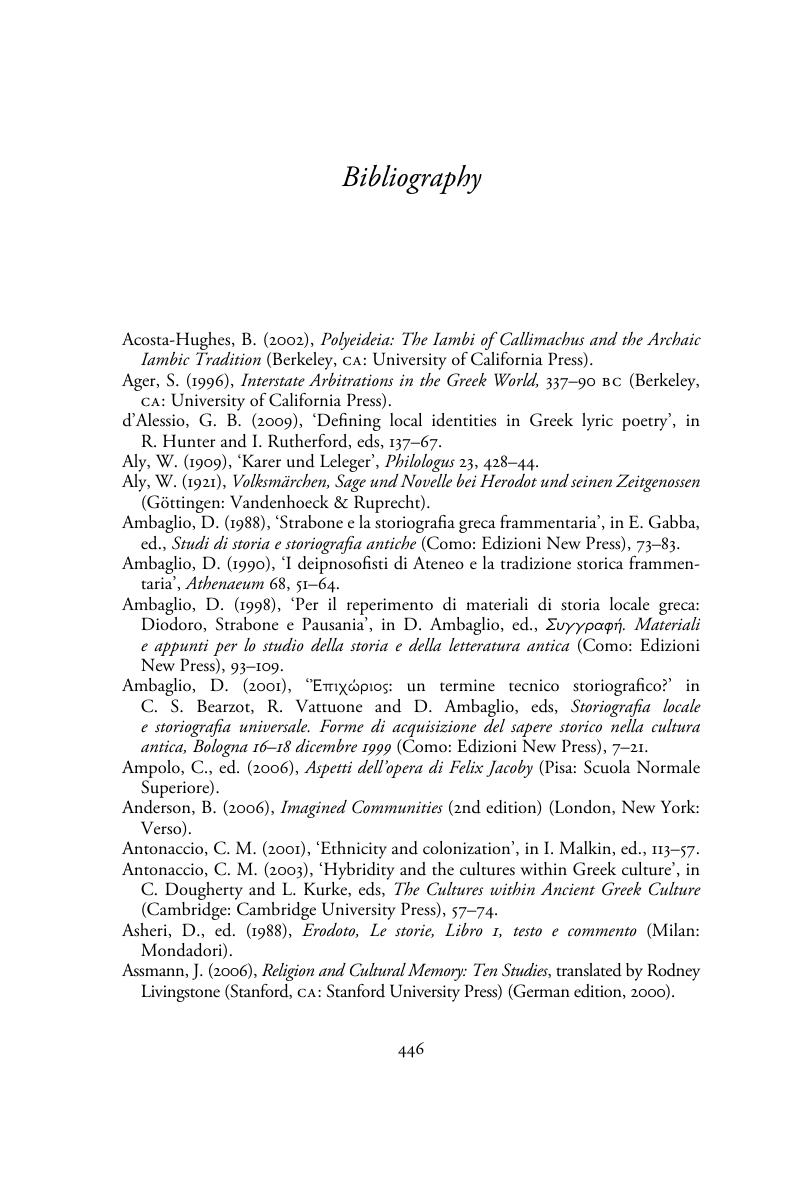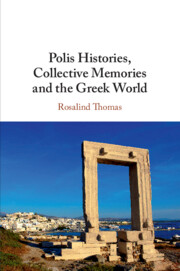Book contents
- Polis Histories, Collective Memories and the Greek World
- Polis Histories, Collective Memories and the Greek World
- Copyright page
- Dedication
- Contents
- Acknowledgements
- Note on References and Abbreviations
- Introduction
- Chapter 1 What Are Polis Histories? What Are Local Histories? Popular History and Its Audiences
- Chapter 2 Tales for the Telling: τὸ μυθῶδες
- Chapter 3 Ethnography for the Greeks? The Polis as a New Subject for Historiography
- Chapter 4 Fostering the Community: Accumulative Historiography
- Chapter 5 Origins, Foundations and Ethnicity: Greeks and Non-Greeks
- Chapter 6 Saving the City: Political History or Paradoxa? Miletus and Lesbos
- Chapter 7 Polis in Flux: Dislocation and Disenfranchisement in Samos
- Chapter 8 Athenian Polis Histories
- Chapter 9 The Aristotelian Politeiai and Local Histories
- Chapter 10 Polis and Island Histories and the Late Classical and Hellenistic World: A New Hellenism?
- Appendix 1 Miletus
- Appendix 2 Polis, Island and Ethnos Historians Dated to the Fourth Century
- Appendix 3 Register of Polis, Island and Ethnos Histories: Jacoby’s Local Histories
- Bibliography
- Index Locorum
- Index
- References
Bibliography
Published online by Cambridge University Press: 26 March 2019
- Polis Histories, Collective Memories and the Greek World
- Polis Histories, Collective Memories and the Greek World
- Copyright page
- Dedication
- Contents
- Acknowledgements
- Note on References and Abbreviations
- Introduction
- Chapter 1 What Are Polis Histories? What Are Local Histories? Popular History and Its Audiences
- Chapter 2 Tales for the Telling: τὸ μυθῶδες
- Chapter 3 Ethnography for the Greeks? The Polis as a New Subject for Historiography
- Chapter 4 Fostering the Community: Accumulative Historiography
- Chapter 5 Origins, Foundations and Ethnicity: Greeks and Non-Greeks
- Chapter 6 Saving the City: Political History or Paradoxa? Miletus and Lesbos
- Chapter 7 Polis in Flux: Dislocation and Disenfranchisement in Samos
- Chapter 8 Athenian Polis Histories
- Chapter 9 The Aristotelian Politeiai and Local Histories
- Chapter 10 Polis and Island Histories and the Late Classical and Hellenistic World: A New Hellenism?
- Appendix 1 Miletus
- Appendix 2 Polis, Island and Ethnos Historians Dated to the Fourth Century
- Appendix 3 Register of Polis, Island and Ethnos Histories: Jacoby’s Local Histories
- Bibliography
- Index Locorum
- Index
- References
Summary

- Type
- Chapter
- Information
- Polis Histories, Collective Memories and the Greek World , pp. 446 - 474Publisher: Cambridge University PressPrint publication year: 2019



